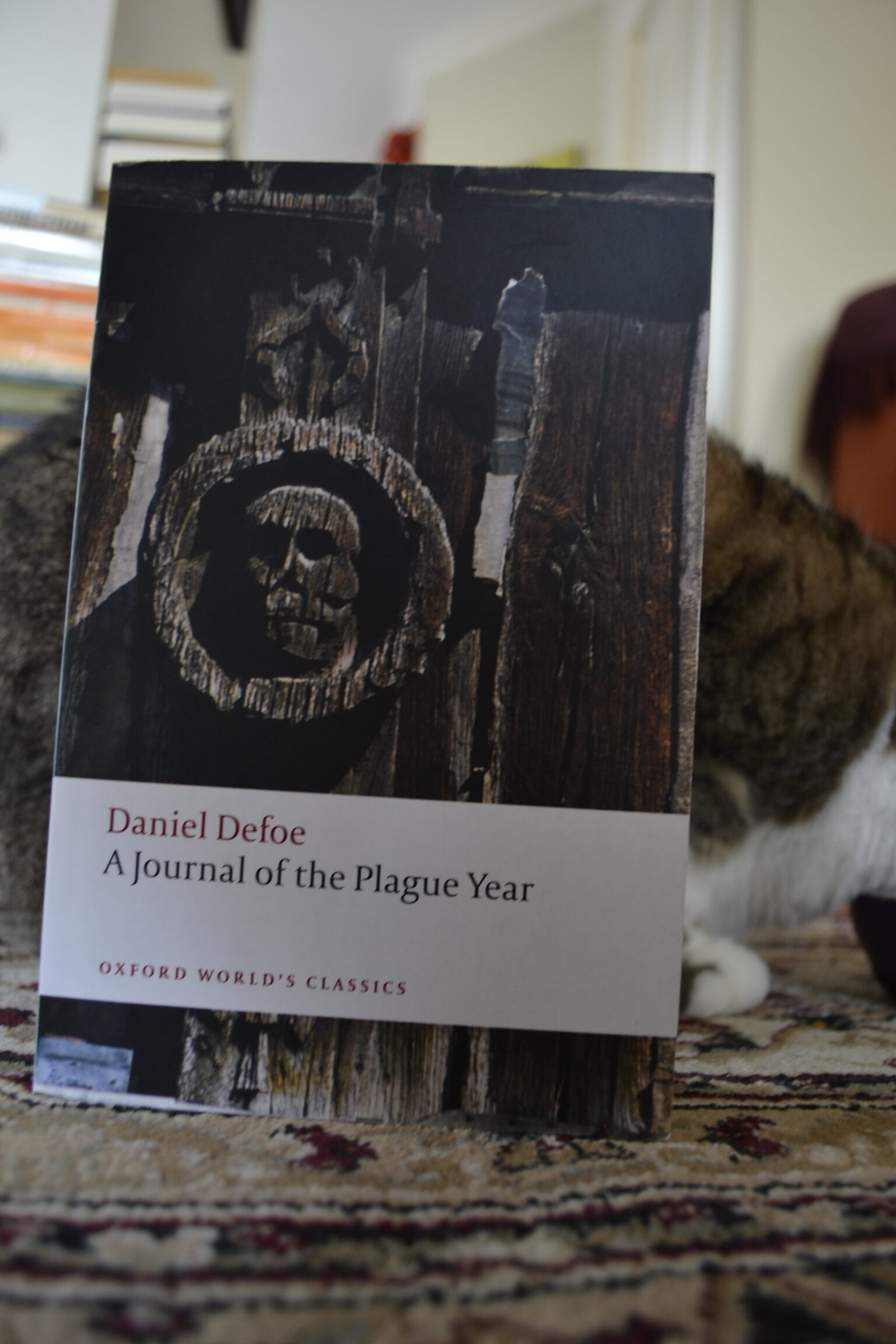A Bonus Post for A Difficult Year
I think everyone can agree that the year 2020 was not what anyone expected. Lockdowns, quarantines, isolations, new normals — it’s been a difficult time for everyone. Myself and my lovely spouse are fortunate enough to work from home, so life didn’t change for us as much as it has for so many others. But, even so, we did have to go through some changes. We’ve been separated from family and haven’t seen the city we love in months. We still talk to friends and family, but we haven’t visited any in a long time. However, our hardships are exceedingly minor in comparison and I am very grateful for that.
The difficulty of the year has me turning to books more than ever as a soothing distraction and in my search for them I can’t help but notice the decided uptick in plague literature. Most of the books I have seen mentioned I’ve read before all of this began — such as Albert Camus’ The Plague, which I greatly enjoyed — but A Journal of the Plague Year was one that was sitting in my to-read stacks. I thought now was the time to actually sit down and read it.
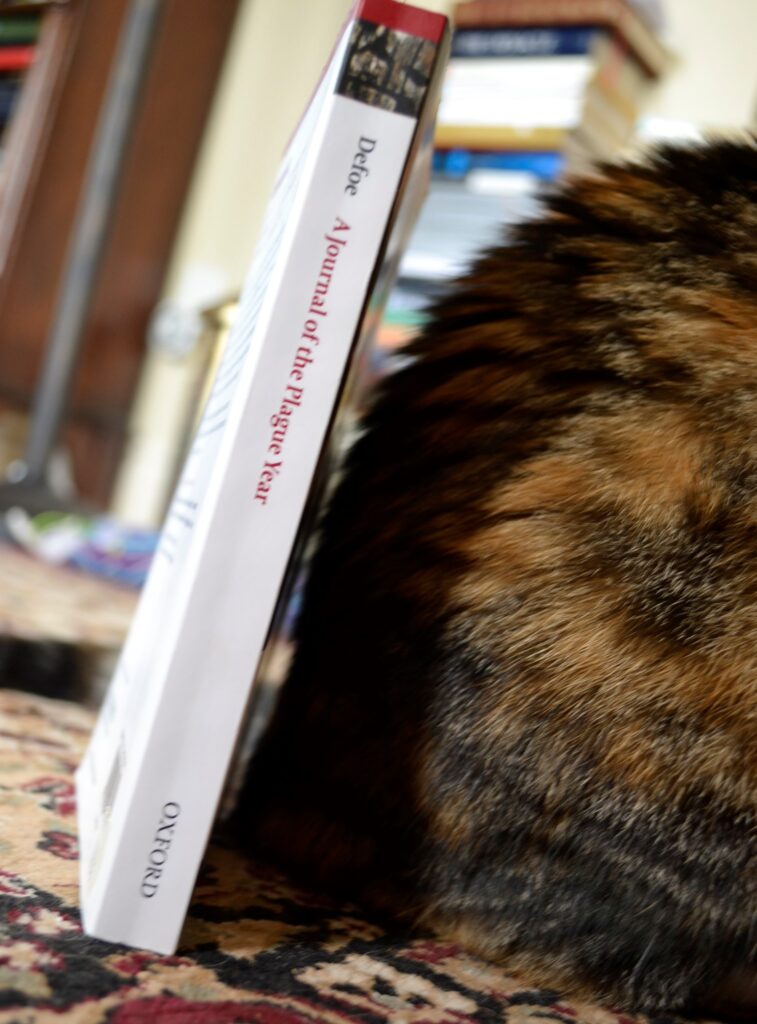
Get Out of Town…Or Not
Daniel Defoe’s A Journal of the Plague Year is an account of London’s 1665 bout of the bubonic plague, fictionally written by HF, a saddler. Defoe himself was a child when the plague actually swept through the city and he had an uncle, Henry Foe, who was a saddler at the time. It is his uncle’s account as well as various other documents that Defoe relies on to construct his narrative of a plague-ridden nightmare of disease ravaging a major metropolitan city.
Once HF decides not to flee London like the rest of his family, he sets out to chronicle what is happening around him. A Journal of the Plague Year is not a novel per se, since it lacks that narrative structure. It is more of an account of a disaster full of rumours, laws, customs, digressions, assorted facts, and stories collected by someone acting as an observer and record keeper of the times in which he finds himself. HF is capturing a moment, not telling the reader a story with a beginning, middle, and end.
Historical Fiction? Fiction? History?
There’s still a debate concerning how much of Defoe’s work is fact and how much is fiction. I think it would be imprudent to treat A Journal of the Plague Year as non-fiction. Why? Well, Defoe’s facts and figures are not quite accurate — though they are close enough to accurate that the spirit of what he is saying remains intact. Also, the stories and rumours that he digresses with are not ones that can be easily proven or pinned down with historical evidence.
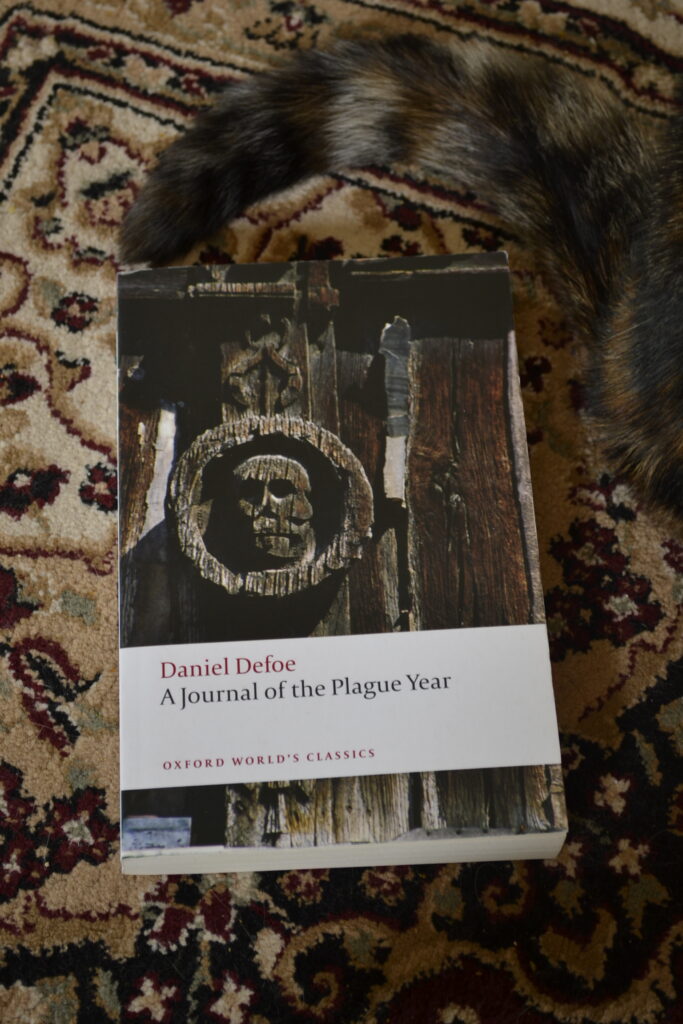
But even with the rumours, tales, and inaccuracies, the point of the Journal remains the same. Defoe is trying to capture an absolutely terrifying time when people were dying in the street, the dead cart dumping corpses into pits because they couldn’t be buried fast enough, and houses shut up and marked to indicate that the family inside was infected. Defoe details the tragedies and the magnitude of the disease, and he also details what city officials do to respond to it, as well as those moments of human kindness that shine in spite of the horror going on around them.
It’s a haunting book, historically accurate or not. However, if you’re already feeling overwhelmed by the news or the current situation in the world, I would perhaps suggest saving it for another time. Some of the events and stories can definitely magnify feelings of hopelessness and it’s important to be aware of that and avoid it if you feel unprepared for it.
The More Things Change, The More They Don’t
What surprised me most about reading A Journal of the Plague Year was just how many similarities a reader can draw between the response to the plague of 1665 and the current pandemic. The people of London went through isolation and quarantines (though a barbaric version of them, at times), and they also tried their best to socially distance as they understood it.
The town officials did all they could to try to keep things under control as people panicked, fled, or tried their best to keep calm and stay in the city while keeping themselves safe. There were individuals who took advantage of the plague to scam people by offering false hopes, sham products, and fashioning themselves as prophets. There were others who worked dangerous essential jobs to help the sick without a thought to themselves. There were economic hardships and mental health crises.
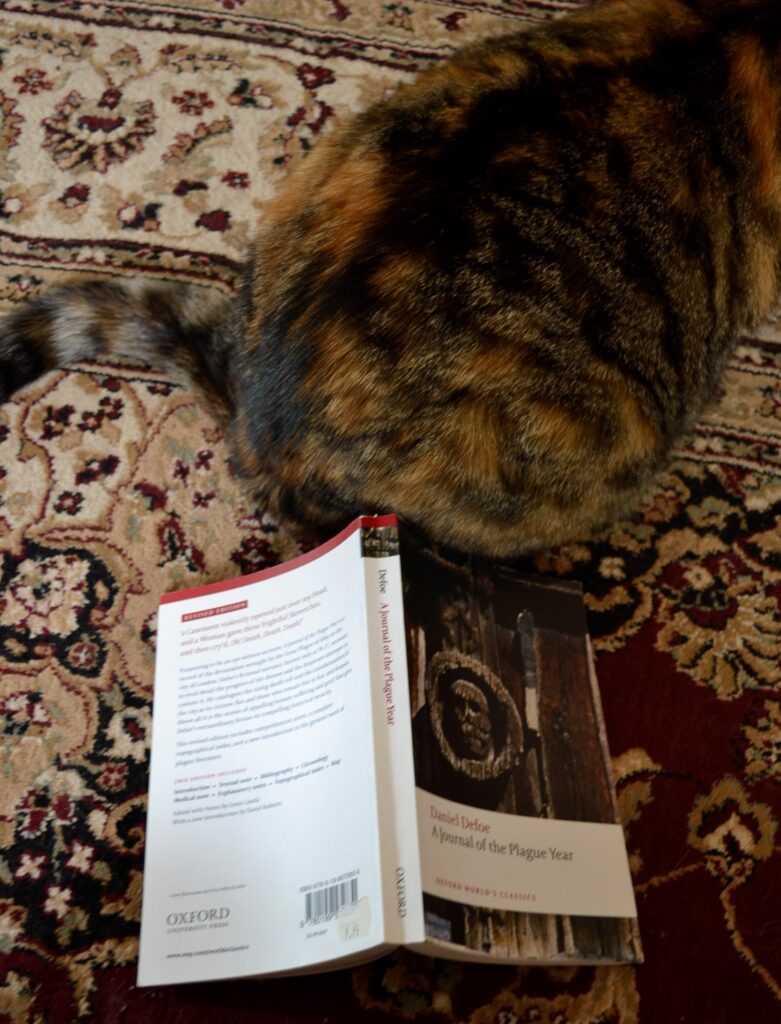
The more things change, the more they stay the same.
It Sure Has Been A Year
As we enter the last two months of the year, part of me can’t quite believe that in just sixty-ish days 2020 will be over. Time has passed so strangely since March — sometimes slowing right down, sometimes turning too fast. It seems like this year has been either two months or twenty months long so far. I look forward to 2021. I also look forward to when the ‘new normal’ slowly melts away and just becomes normal again.
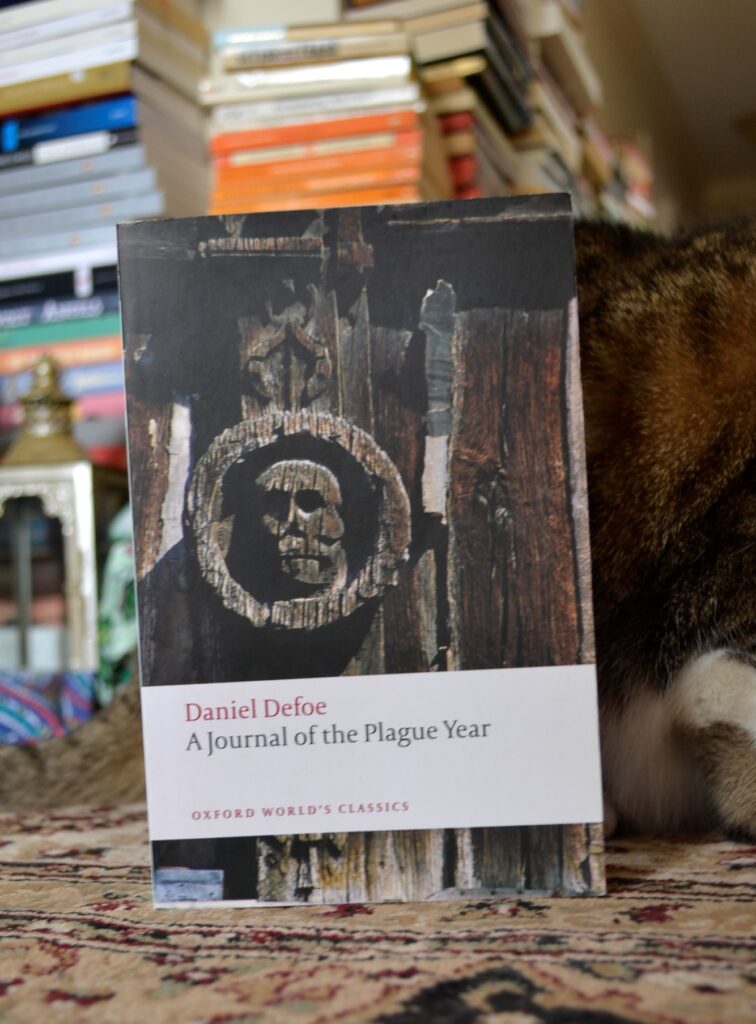
That day feels very far away, but it will be here someday. Until then, stay safe, and be careful with the plague literature. I wouldn’t recommend bingeing on it unless you know what you’re getting into and think that your mood can withstand it (or else, if that’s what you find comforting during this time — then that’s a different story). I would recommend taking a break for some lighter fare at least every book or so.
